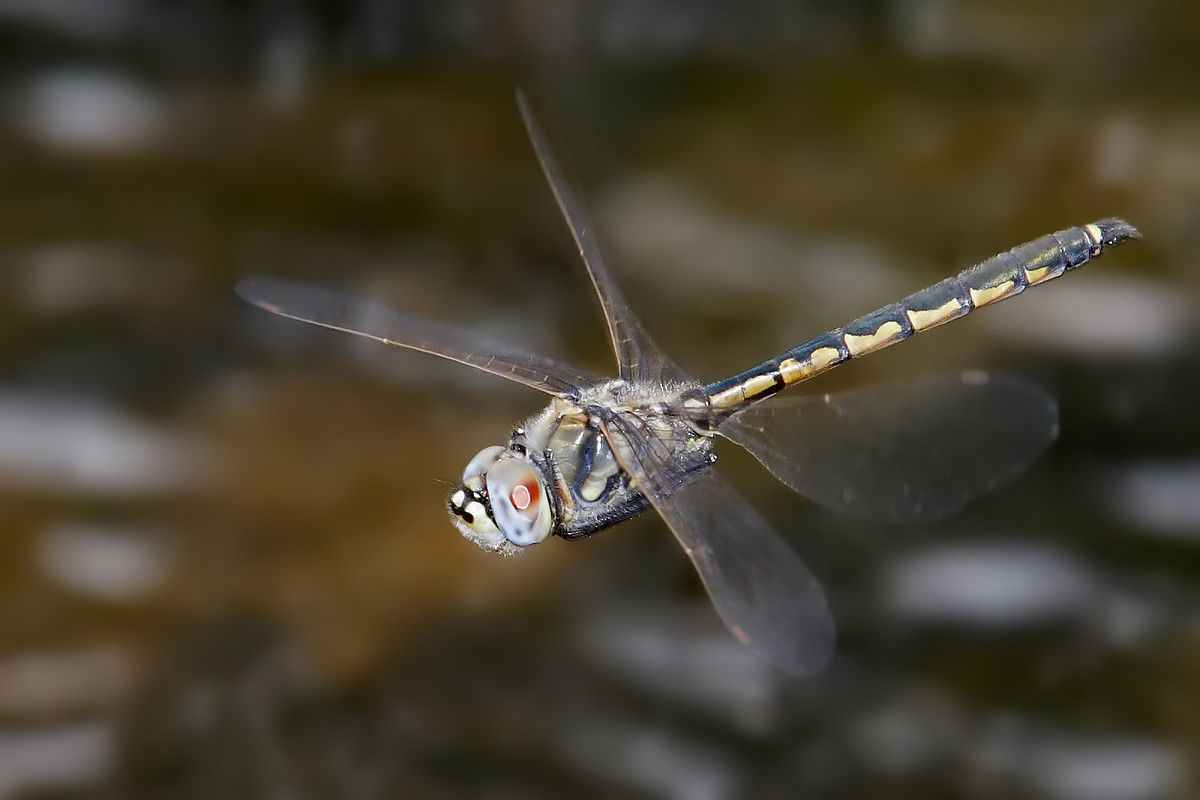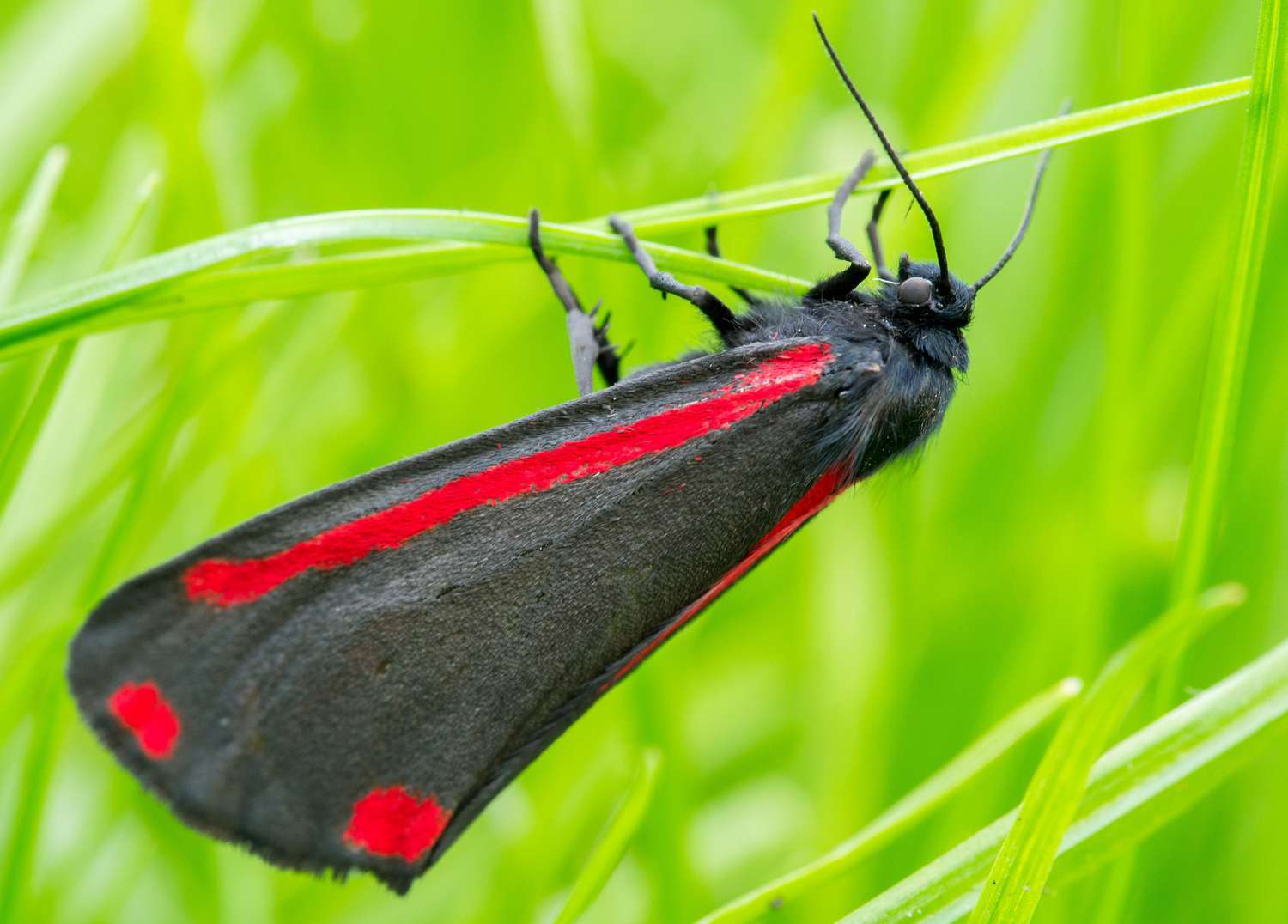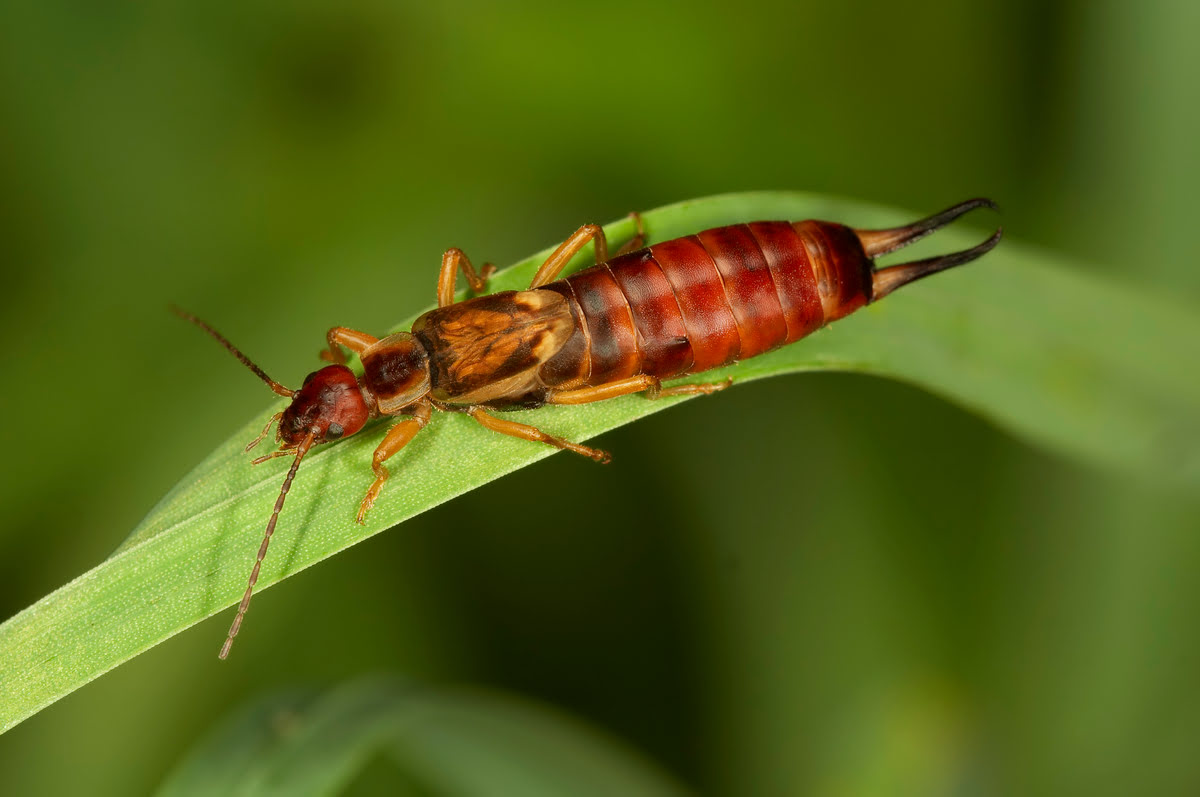Home>Gardening News and Trends>Latest News>What Insects Bite At Night


Latest News
What Insects Bite At Night
Modified: January 22, 2024
Discover the latest news about insects that bite at night. Stay informed about the most recent developments and learn how to protect yourself.
(Many of the links in this article redirect to a specific reviewed product. Your purchase of these products through affiliate links helps to generate commission for Chicagolandgardening.com, at no extra cost. Learn more)
Table of Contents
Introduction
When the sun sets and darkness envelops the world, a different kind of activity begins. While most creatures retreat to the safety of their homes, some insects come out to play – or rather, to bite. It is during the night that certain insects become more active, ready to sink their tiny fangs into unsuspecting victims. Understanding which insects are nocturnal biters and what attracts them can help us protect ourselves from their unwelcome presence.
While it may seem like insects are more bothersome at night, there are legitimate reasons for their increased activity. First, the cover of darkness provides a sense of safety for these creatures, making it easier for them to search for food without the threat of predators. Additionally, certain insects have evolved to feed specifically during the night to avoid competition with others in their ecosystem.
Several factors contribute to attracting insects at night. One of the primary factors is the release of carbon dioxide, which acts as a beacon for biting insects. As we exhale, we emit carbon dioxide, signaling to these insects that there is a potential food source nearby. Other factors can include body heat, sweat, and even the scents emitted by our skin. Some insects are also attracted to light, making your porch light or outdoor lighting a magnet for nocturnal pests.
Now that we understand why insects are more active at night and what attracts them, let us delve into the specific types of insects that tend to bite during the nighttime hours. From the dreaded mosquito to the elusive no-see-ums, we will explore these insects, their bite patterns, and the best ways to protect ourselves from their nocturnal nuisances.
Factors that Attract Insects at Night
Various factors contribute to the attraction of insects during the nighttime hours. Understanding these factors can help us take preventive measures to minimize the risk of getting bitten. Here are some key factors that attract insects at night:
- Carbon dioxide: One of the primary factors that attract biting insects is the release of carbon dioxide. Mosquitoes, for example, are highly sensitive to CO2 and can detect it from a significant distance. When we exhale, we emit carbon dioxide, signaling to mosquitoes and other insects that there is a potential food source nearby.
- Body heat: In addition to carbon dioxide, insects are also attracted to body heat. The warmth radiating from our bodies acts as a beacon, making us more appealing to mosquitoes, bed bugs, and other nocturnal pests.
- Sweat: Sweat is another factor that attracts insects, particularly mosquitoes. Mosquitoes are drawn to the chemicals present in our sweat, such as lactic acid and ammonia. The combination of body heat and sweat creates an irresistible attraction for these blood-sucking pests.
- Skin scents: Our skin produces various scents that can be attractive to insects. These scents can be influenced by factors such as the food we consume or the products we use on our body. For example, some fragrances and lotions can act as mosquito attractants, increasing the likelihood of getting bitten.
- Light: While not applicable to all insects, certain species are attracted to light sources. This phenomenon is known as phototaxis. Outdoor lights, such as porch lights or streetlights, can draw nocturnal insects towards them. This is especially true for moths, some flies, and other light-sensitive pests.
By being mindful of these factors, we can take steps to reduce our attractiveness to night-biting insects. This can include using insect repellents, wearing protective clothing, and minimizing outdoor activities during peak mosquito hours. Additionally, using yellow or amber-colored outdoor lights can help reduce the attraction of insects compared to traditional white lights.
Mosquitoes: The Notorious Night Biters
When it comes to night-biting insects, mosquitoes top the list. These tiny, buzzing pests are infamous for their itchy bites and ability to ruin a peaceful night outdoors. But why are mosquitoes more active at night, and what makes them such efficient bloodsuckers?
Mosquitoes are nocturnal insects, meaning they are most active during the nighttime hours. They have evolved to feed on the blood of mammals, including humans, to obtain the necessary protein for egg production. Female mosquitoes, in particular, require a blood meal to develop their eggs.
So why are mosquitoes more prevalent at night? Several factors contribute to their nighttime feeding habits. First, mosquitoes are highly sensitive to carbon dioxide, which humans emit as they exhale. As we breathe, we inadvertently attract mosquitoes by releasing plumes of CO2, indicating the presence of a potential host nearby.
Additionally, mosquitoes are attracted to body heat and sweat. The warmth and moisture our bodies produce act as beacons, drawing them closer to their unsuspecting victims. They are also attracted to the scents emitted by our skin, such as lactic acid and ammonia found in sweat, making certain individuals more appealing targets.
Another reason why mosquitoes are more active at night is that temperatures tend to be cooler, especially in warm climates. Mosquitoes are sensitive to extreme heat and desiccation, so they prefer feeding during the cooler hours of the day and night.
Unfortunately, mosquito bites aren’t just itchy and annoying. Mosquitoes can transmit a variety of diseases to humans, including malaria, dengue fever, Zika virus, and West Nile virus. This makes it crucial to protect ourselves from these pesky pests, especially during dusk and dawn when mosquito activity is at its peak.
To minimize your exposure to mosquito bites at night, consider taking the following precautions:
- Apply mosquito repellents containing DEET or other approved ingredients to exposed skin.
- Wear light-colored, loose-fitting clothing that covers your arms and legs.
- Avoid outdoor activities during peak mosquito hours, typically around dawn and dusk.
- Use bed nets or insect screens to keep mosquitoes out of sleeping areas.
- Eliminate standing water around your home, as it serves as breeding grounds for mosquitoes.
By being proactive and implementing these preventive measures, you can significantly reduce the risk of mosquito bites and the potential for mosquito-borne illnesses.
No-See-Ums: Tiny Pests with a Big Bite
While mosquitoes may be the most well-known nighttime biters, there is another tiny culprit that can cause big annoyance – the no-see-um. Also known as biting midges or sandflies, these minuscule insects can pack a punch with their bites, leaving behind itchy welts.
No-see-ums are tiny flies belonging to the Ceratopogonidae family. They are so small that they can easily go unnoticed, hence their name. These insects are particularly prevalent near bodies of water, marshes, and damp areas, as they require moisture for breeding and development.
No-see-ums are most active during the early evening hours and at night. They are attracted to warmth, moisture, and carbon dioxide, just like mosquitoes. The biting females require blood meals to nourish their eggs, while the non-biting males feed on nectar and other plant fluids.
What sets no-see-ums apart from mosquitoes is their ability to penetrate even the smallest gaps in clothing or screens. Their bites tend to be more painful, and the ensuing itch can linger for days. This is because, like mosquitoes, no-see-ums inject saliva into their victims, which can trigger an allergic reaction in some people.
Protecting yourself from no-see-um bites can be challenging due to their small size, but it is not impossible. Here are some tips to help you prevent these tiny pests from ruining your outdoor activities:
- Wear loose, light-colored clothing that covers your arms and legs.
- Apply insect repellents containing DEET or picaridin to exposed skin.
- Use fine-mesh screens or mosquito netting to keep them from entering your home or outdoor living spaces.
- Avoid areas with high no-see-um populations, especially during peak activity times.
- Consider using fans or installing outdoor misting systems to create a breeze and deter these pests.
If you do get bitten by no-see-ums, there are various remedies you can try to alleviate the itching and discomfort. Over-the-counter anti-itch creams, calamine lotion, or cold compresses can provide temporary relief. If the itching persists or worsens, consult a healthcare professional for further guidance.
Remember, while they may be tiny, no-see-ums can leave a lasting impression. By taking preventive measures and being vigilant, you can minimize the annoyance and discomfort caused by these persistent little biters.
Bed Bugs: The Nighttime Nuisance
When it comes to nighttime pests, bed bugs are often at the top of the list. These nocturnal parasites are a nuisance, causing sleepless nights and itchy, red bites. Understanding their habits and knowing how to detect and prevent infestations can help you avoid these bothersome creatures.
Bed bugs are small, oval-shaped insects that feed exclusively on blood, with humans being a preferred food source. They are primarily active at night and are attracted to the warmth and carbon dioxide emitted by their sleeping hosts. This is why they tend to infest areas where people rest or sleep, such as beds, sofas, and even movie theaters.
Contrary to popular belief, bed bugs are not a sign of poor hygiene. They can infest any environment, from luxurious hotels to clean homes. The bugs themselves are extremely resilient and can survive for months without feeding, making them difficult to eradicate once established.
Identifying a bed bug infestation can be challenging, as they are small and adept at hiding. Look for signs such as tiny blood stains or dark spots on your sheets and mattress, which are indicative of their presence. Additionally, you may notice rusty-colored exoskeletons or a sweet, musty odor in infested areas.
While bed bug bites are not known to transmit diseases, they can cause significant discomfort. The bites are typically clustered in a line or a small group, often accompanied by itchiness and skin irritation. Some individuals may also have allergic reactions to the bites, which can exacerbate the symptoms.
To prevent bed bug infestations, it is important to take precautionary measures, especially when traveling or staying in shared accommodations:
- Inspect your hotel room or rental accommodation thoroughly for signs of bed bugs before unpacking.
- Keep your luggage elevated and away from the bed and furniture.
- Wash and dry your clothes on high heat after traveling.
- Use protective mattress covers that encase the entire mattress, making it harder for bed bugs to infest.
- Regularly vacuum your home, paying close attention to cracks, crevices, and baseboards.
If you suspect you have a bed bug infestation, it is best to seek professional help for thorough treatment. DIY methods are often ineffective, and inadequate treatment can lead to the pests spreading further.
Remember, early detection and prevention are key to keeping these nighttime nuisances at bay. By staying vigilant and taking necessary precautions, you can protect yourself from the annoyance and discomfort caused by bed bugs.
Sand Flies: The Silent Predators at Dusk
When enjoying the outdoors, especially near coastal areas or sandy habitats, there is another nighttime pest that can go unnoticed until it’s too late – the sand fly. These small, silent predators are known for their painful bites and the potential transmission of diseases.
Sand flies, also called sand fleas or sand gnats, are tiny insects belonging to the Phlebotominae subfamily. They are often found in sandy environments, marshes, and areas with high humidity. Sand flies are most active during dusk and dawn when they emerge from their hiding places to seek blood meals.
Unfortunately, sand flies are not just a nuisance – they can transmit diseases. The most well-known disease caused by sand fly bites is leishmaniasis, a parasitic infection that affects millions of people worldwide. The symptoms of leishmaniasis can vary from mild skin lesions to life-threatening systemic complications.
Similar to mosquitoes, female sand flies require blood meals to develop their eggs. They are attracted to warmth, carbon dioxide, and certain scents emitted by their potential hosts. Upon finding a suitable host, they will bite, injecting saliva that contains anticoagulants to facilitate blood flow.
The bites of sand flies are known to be painful and itchy. The red, swollen welts they leave behind can take weeks to heal, leading to discomfort and irritation. In addition to leishmaniasis, sand flies are also capable of transmitting other diseases such as bartonellosis and sandfly fever.
To protect yourself from sand fly bites, especially when spending time near their habitats, consider the following preventive measures:
- Wear protective clothing, such as long sleeves and pants, to minimize exposure to sand flies.
- Apply insect repellents containing DEET or picaridin to exposed skin.
- Use bed nets or screens in sleeping areas to keep sand flies out.
- Avoid outdoor activities during peak sand fly hours, particularly around dusk and dawn.
- Remove standing water and debris, as these can serve as breeding grounds for sand flies.
It is worth noting that sand flies can be more prevalent in certain regions, especially in tropical and subtropical areas. If you are planning to travel to such destinations, research the local conditions and take appropriate precautions to protect yourself from sand fly bites and potential diseases they may transmit.
By being aware of the presence of sand flies and taking preventive measures, you can reduce the risk of encountering these silent predators and minimize the discomfort and potential health risks associated with their bites.
How to Protect Yourself from Night Biting Insects
Dealing with night-biting insects can be frustrating and disruptive to our daily lives. Fortunately, there are several effective measures you can take to protect yourself from these pesky creatures and enjoy your evenings in peace. Here are some essential tips to help you stay bug-free:
- Use insect repellents: Apply insect repellents containing DEET, picaridin, or other approved ingredients on exposed skin. Be sure to follow the instructions on the product label for safe and effective use.
- Wear protective clothing: Cover up as much of your skin as possible to minimize exposure to biting insects. Wear long sleeves, long pants, and socks, especially in areas prone to infestations.
- Screen your windows and doors: Use window screens and door screens with small mesh to keep insects out while still allowing fresh air to circulate.
- Install outdoor lighting strategically: Consider using yellow or amber-colored outdoor lights, as they are less attractive to insects compared to white lights. Place lights away from entrances to reduce the chances of attracting insects into your home.
- Clear your surroundings: Remove standing water, as it can serve as a breeding ground for mosquitoes and other insects. Trim shrubs and bushes near your home to eliminate potential hiding places for pests.
- Avoid heavily scented products: Some scented lotions, perfumes, and hair products can attract insects. Consider using unscented or lightly scented alternatives to minimize your attractiveness to bugs.
- Be cautious during peak activity hours: Most night-biting insects are more active during specific hours, such as dusk and dawn. If possible, limit your outdoor activities during these times to minimize the risk of encounters.
It’s important to note that while these preventive measures can greatly reduce your exposure to night-biting insects, they may not always guarantee complete protection. Some insects, such as sand flies and no-see-ums, are particularly adept at finding their way through small openings or biting through clothing. Despite your best efforts, you may still encounter some bites.
If you do get bitten, resist the urge to scratch, as it can lead to further irritation and potential infection. Instead, clean the bite area with mild soap and water and apply a cold compress or soothing anti-itch cream to alleviate discomfort.
If you experience severe allergic reactions or develop any unusual symptoms after an insect bite, seek medical attention promptly. A healthcare professional can provide appropriate treatment and guidance based on your specific situation.
By following these preventive measures and being prepared, you can minimize the annoyance and potential health risks associated with night-biting insects. Enjoy your evenings outdoors without worrying about unwanted visitors and their itchy bites!
Conclusion
When the sun sets and darkness falls, certain insects take advantage of the cover of night to prey on unsuspecting victims. Mosquitoes, no-see-ums, bed bugs, and sand flies are just a few of the notorious night biters that can turn a peaceful evening into an itchy and uncomfortable experience.
Understanding what attracts these insects and how to protect ourselves is key to avoiding their bites and the potential health risks they may pose. Factors such as carbon dioxide, body heat, sweat, and skin scents attract mosquitoes and other night-biting insects to us. By minimizing these attractants, using insect repellents, and wearing protective clothing, we can greatly reduce our risk of being bitten.
It is also important to be aware of the specific habits and characteristics of each night-biting insect. Mosquitoes, the most well-known of the bunch, are drawn to carbon dioxide and body heat. No-see-ums, on the other hand, are attracted to warmth, humidity, and carbon dioxide. Bed bugs are skilled hitchhikers that infest sleeping areas, while sand flies thrive in sandy habitats and moist environments.
By implementing preventive measures such as using insect repellents, wearing appropriate clothing, and inspecting sleeping areas when traveling, we can greatly reduce our risk of encountering these nighttime pests. Furthermore, staying vigilant and being aware of the symptoms associated with bites can help us seek prompt medical attention if necessary.
However, it is important to remember that no preventive measure is 100% foolproof, and it is still possible to experience bites despite our best efforts. In such cases, prompt and appropriate treatment can help alleviate discomfort and reduce the risk of complications.
As we continue to enjoy the beauty and tranquility of the night, let us also be mindful of the potential presence of these nocturnal biters. By taking preventive measures and being prepared, we can ensure that our evenings remain enjoyable and free from the nuisance and discomfort caused by night-biting insects.








